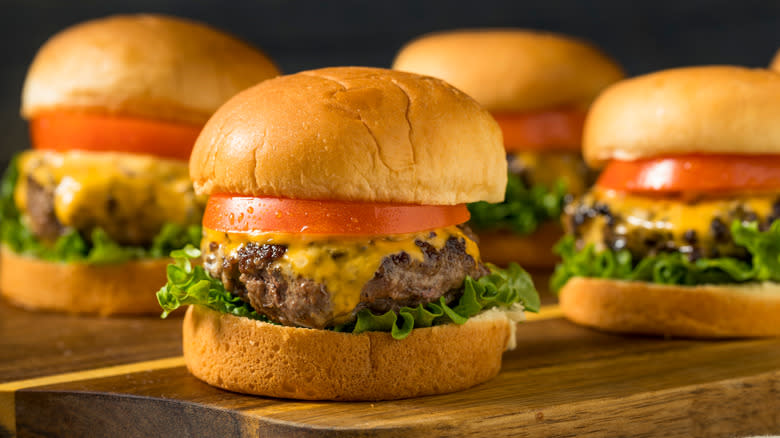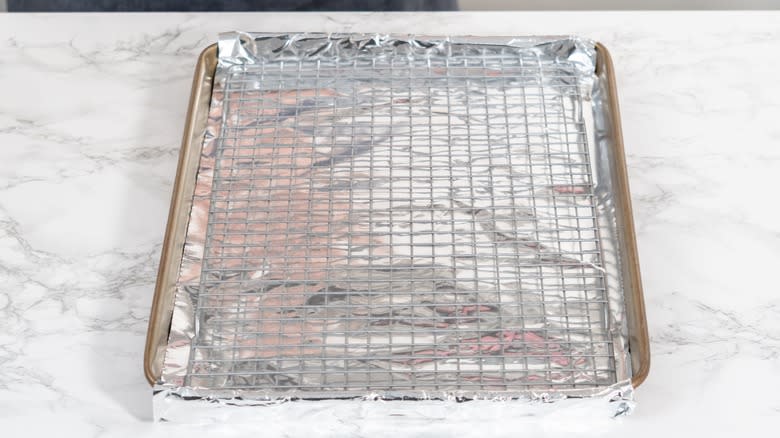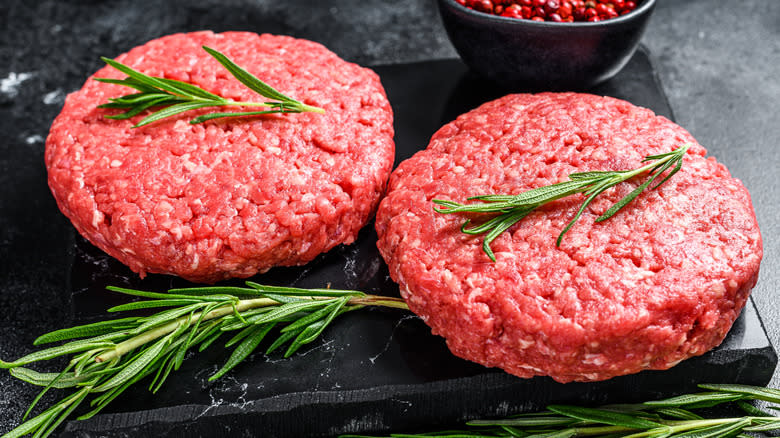Reach For Your Wire Baking Rack When Cooking Burgers In The Oven

When you're craving a juicy burger there's typically a flame involved, because nothing beats a juicy burger off the grill. However, it's not always feasible to fire up a grill and sometimes cooking indoors is more practical. While you could be tempted to turn on your stovetop, if you need to make a lot of burgers at once, you should consider your oven. And, while a baking pan alone will work, a better way to make the best oven burger ever is to use your trusted wire baking rack as a handy tool.
Using a baking rack set inside a baking sheet is a common trick for making perfect bacon, but it will also result in flavorful burgers. That's because the patties will be elevated inside of the oven, allowing the air to move around them, resulting in a crispy, caramelized crust free of extra grease. The best part is all types of burgers can be made with this method, including poultry, seafood, and veggie burgers. You will, however, need to follow a few guidelines to make sure you execute this method safely, and a couple of tricks to set yourself up for success.
Read more: 8 Baking Sheet Mistakes You Want To Avoid
Why A Wire Baking Rack Is The Best Tool To Bake Burgers

Along with ensuring even browning, a wire baking rack will afford you a lot of control when baking any type of burger in the oven. To prepare, take a rimmed baking sheet and cover it with foil if you want to simplify clean-up. Then, place an oven-safe stainless steel rack inside the baking sheet. Coated or non-stick racks are typically not able to withstand the heat of the oven, so be sure to follow the manufacturer's instructions. Give the rack a coating of non-stick cooking spray or brush with a little oil. Don't crowd the surface, leave an inch or so of space between the burgers to allow for air circulation and to make it easier to flip them.
This method is ideal for both fattier burgers, like those made with beef, and delicate, lean burgers made from fish and vegetables. The rack will elevate the burger over the drippings of a beef burger and provide less surface area for a lower-fat burger to stick to. Besides all-around air circulation, another advantage of using the baking rack is that it simplifies tending to the burgers -- making flipping, topping the burgers, and checking for doneness a breeze.
How To Prep A Burger For Oven Cooking

When preparing a burger for the oven, there are a few tried-and-true steps you should follow. Regardless of whether you're using a homemade blend or a high-quality frozen product, you want the patties to be close to room temperature. This will ensure that the center fully cooks before the outside burns. So season the patties generously and set them aside while you prep the baking pan, rack, and any toppings.
If you're making a standard beef burger, bake it at 425 degrees Fahrenheit -- and you might want to try finishing it in the broiler to create a nicely browned crust. However, if you're making a veggie burger, like homemade falafel burgers, or using a delicate seafood patty, you might need to use a lower oven temperature to avoid burning the outside of the burger before the center cooks. Also, when checking for the doneness of a beef burger, never rely solely on feel. Always use a meat thermometer, and make sure to reach 160 degrees Fahrenheit -- the minimum safe temperature recommended by the FDA.
Read the original article on Daily Meal.

